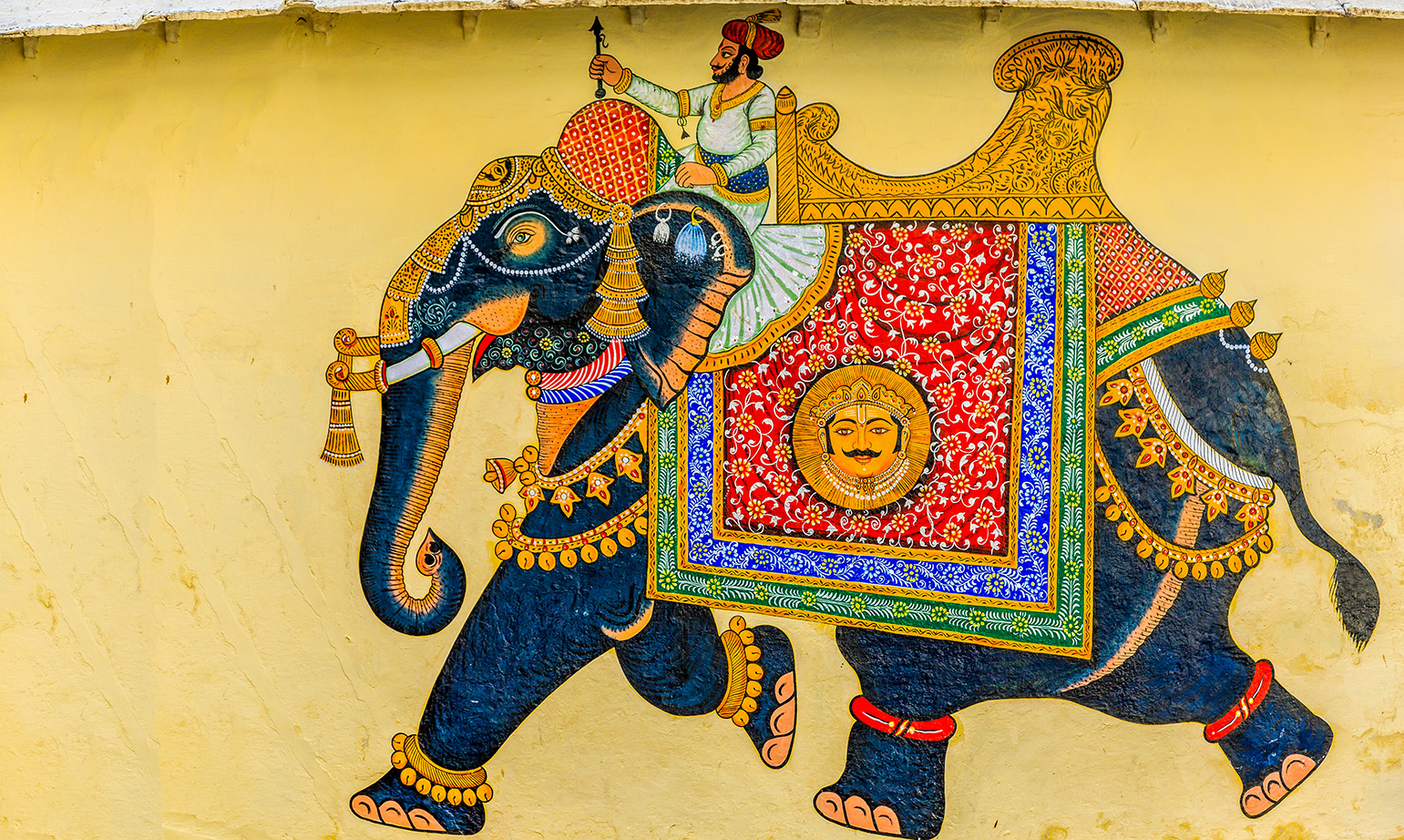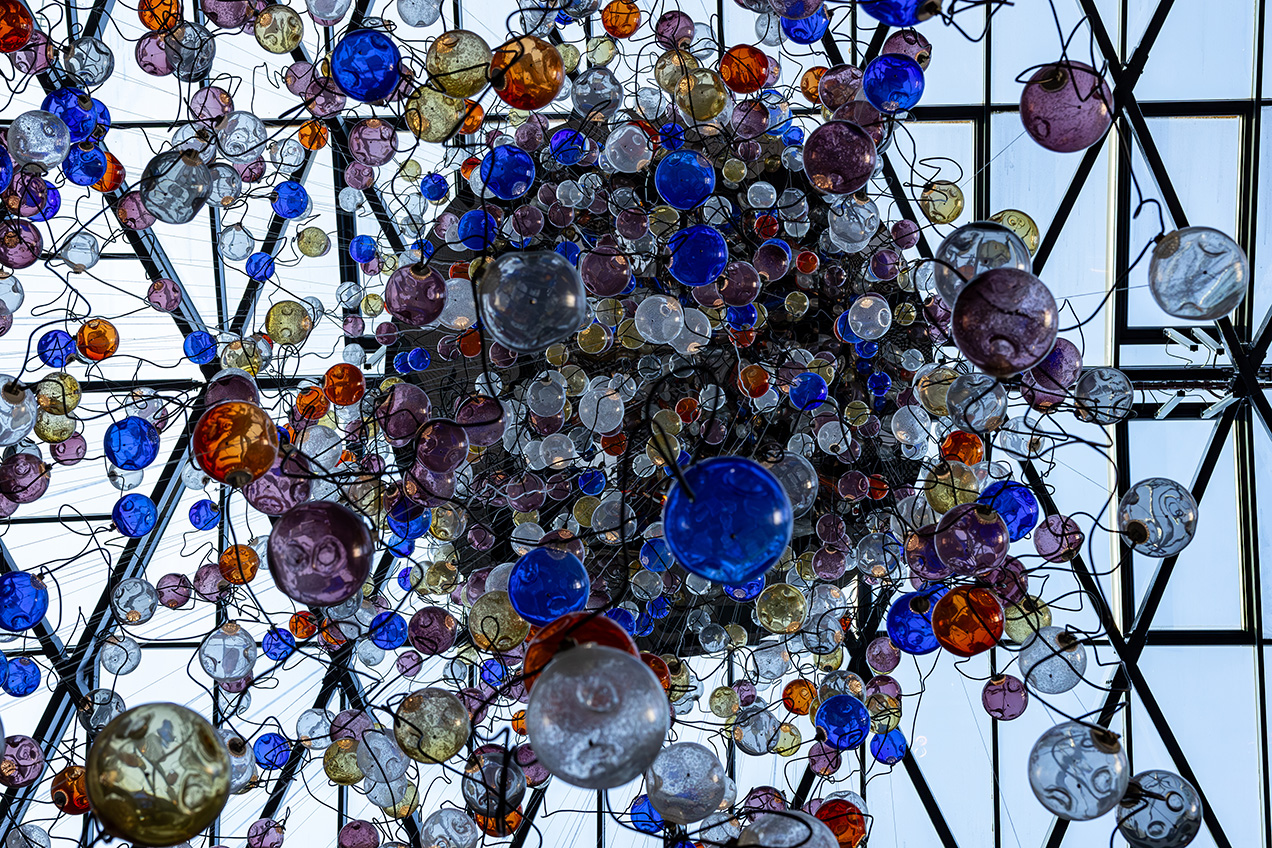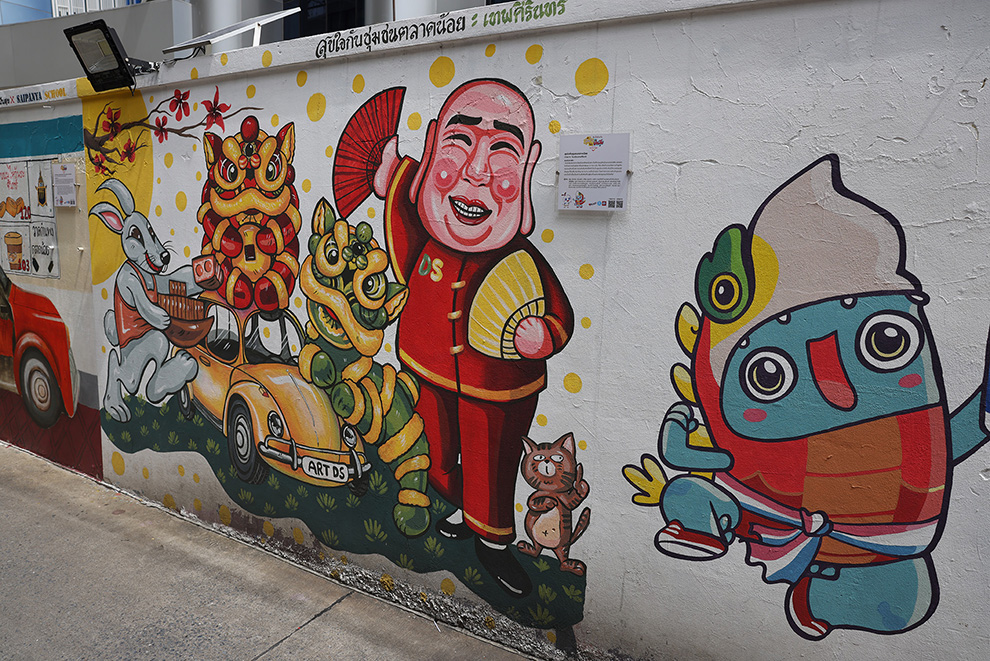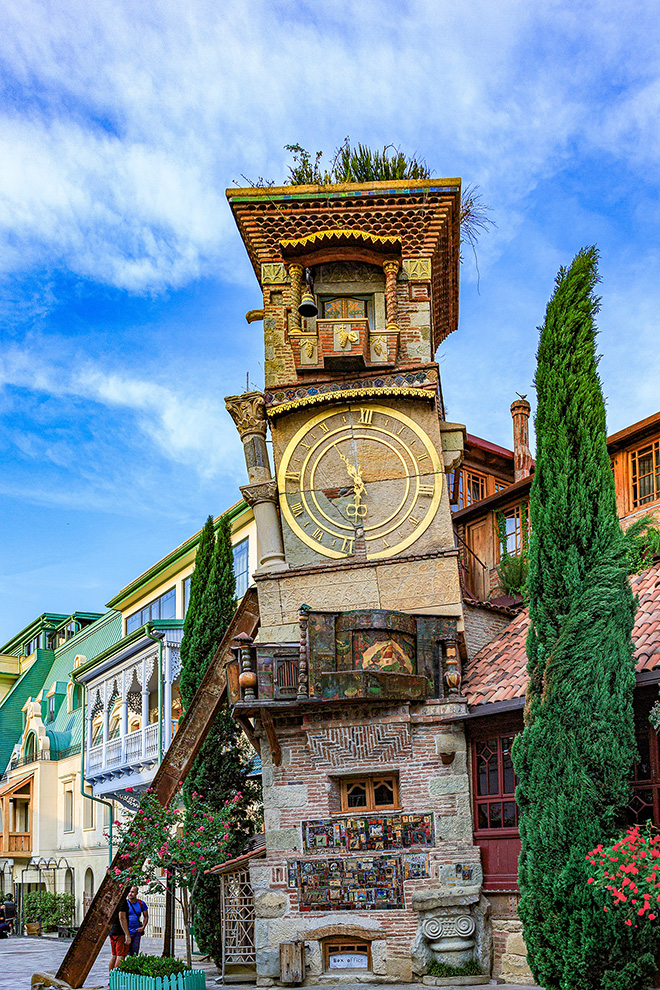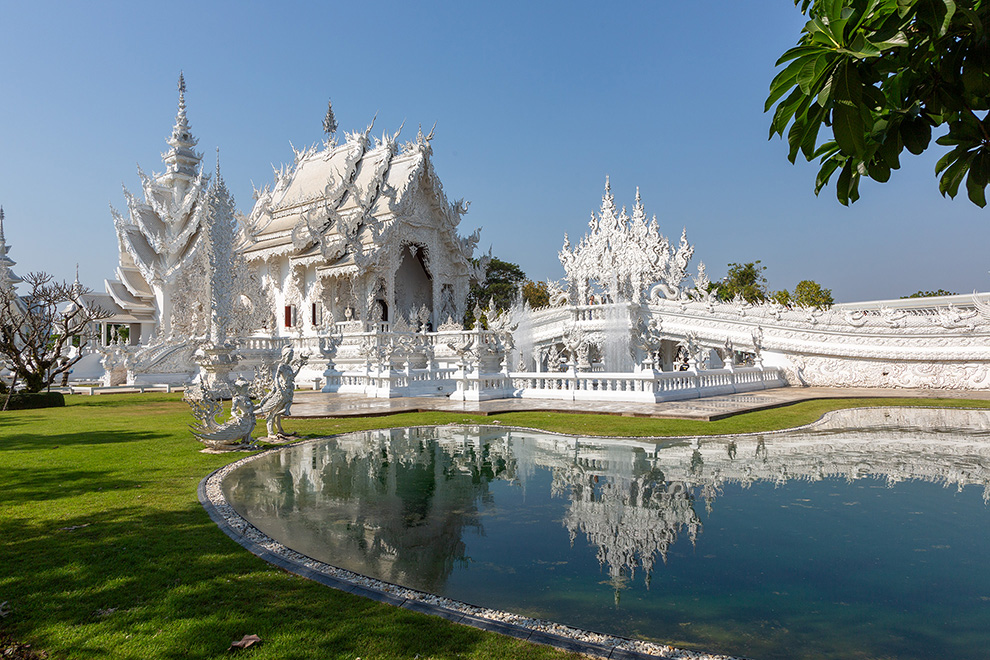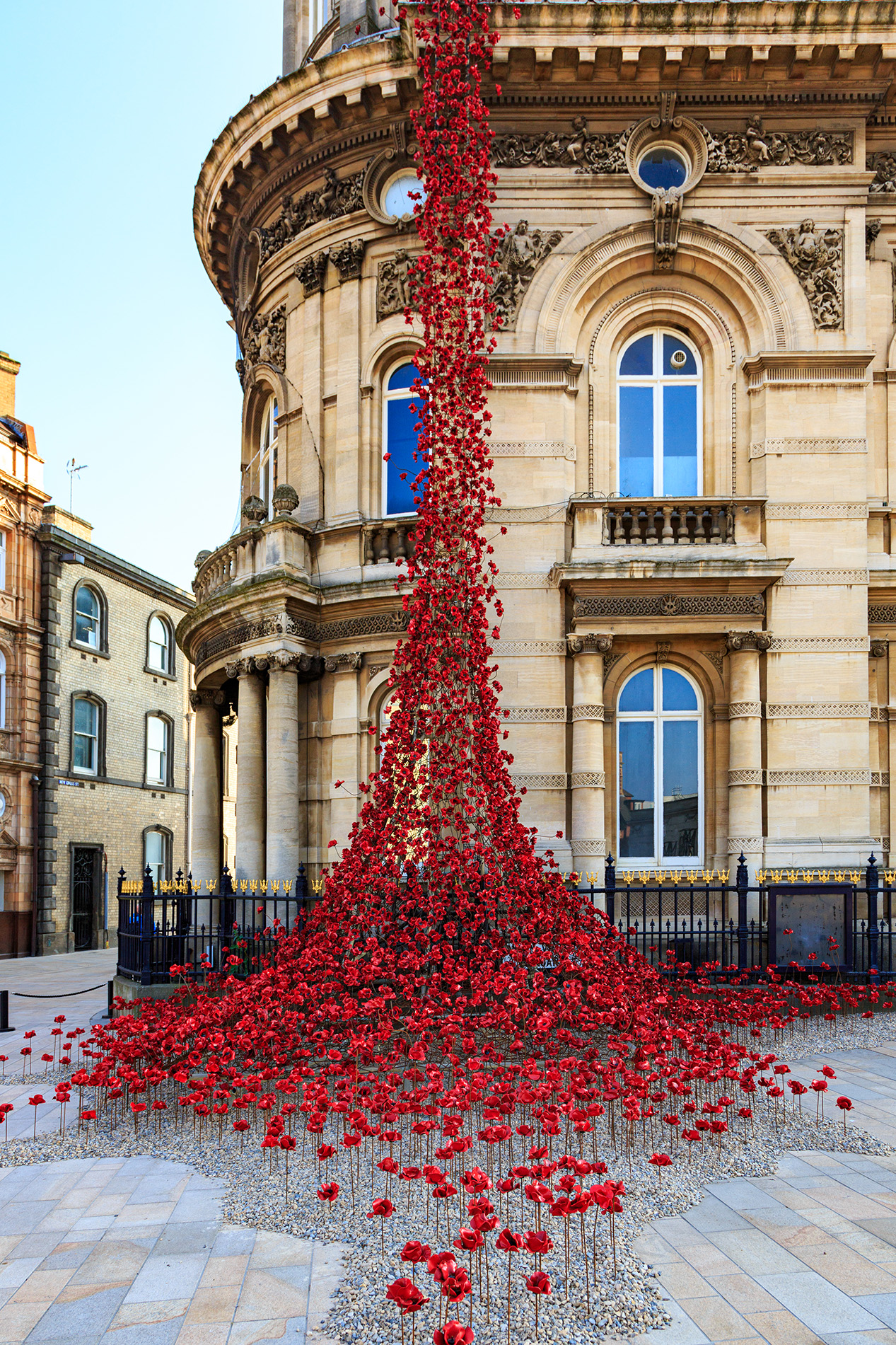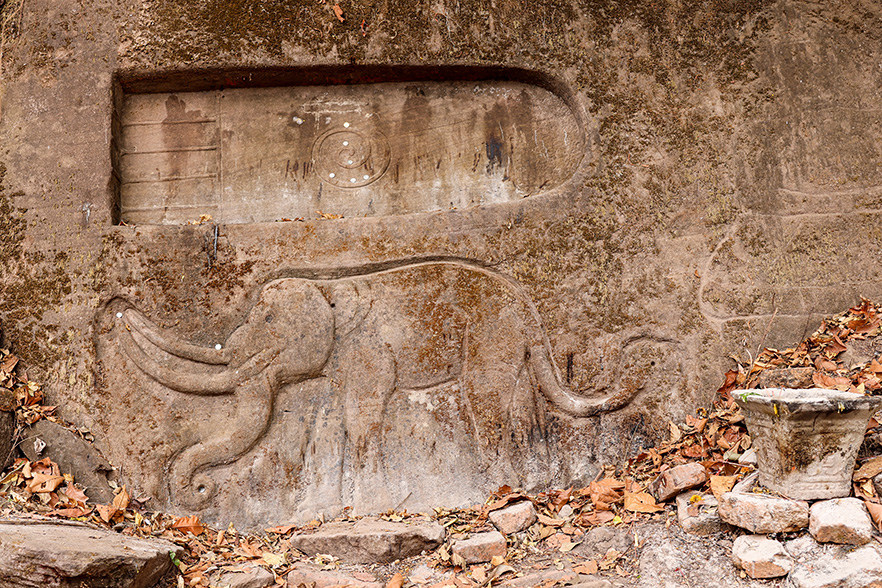
Buddha's footprint in Vat Phou - Laos
Buddha's footprint in Vat Phou
Buddha's footprint is a Buddhist symbol that is shaped like an imprint of Gautama Buddha's foot. There are two forms: natural, as found in stone or rock, and man-made. Many of the 'natural' footprints are recognised as not being the actual footprints of the Buddha, but rather replicas or representations of them, which can be regarded as cetiya (Buddhist relics). Approximately 3,000 footprints of the Buddha can be found throughout Asia and date from different eras. Buddhist art is visual art that has arisen in connection with Buddhism. It includes depictions of Gautama Buddha, important Buddhist figures from history and mythology, narrative scenes from their lives, mandalas and physical objects associated with Buddhist practice, such as vajras, bells, stupas and Buddhist temple architecture. Buddhist art has its origins in the north of the Indian subcontinent, in present-day India, Pakistan and Afghanistan. The earliest traditions date from a few centuries after the historical life of Siddhartha Gautama from the 6th to 5th century BC.
